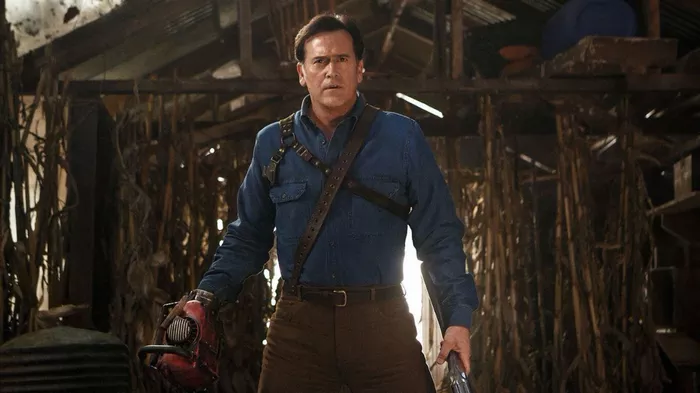The evolution of filmmaking technology has been a remarkable journey, with each era bringing forth innovations that redefine the boundaries of visual storytelling. In the 1980s, Introvision emerged as a groundbreaking technique, allowing filmmakers to incorporate images and backdrops in-camera, achieving impressive effects in cult classics like “Army of Darkness” and the Harrison Ford action classic “The Fugitive.” Decades later, the baton was passed to a successor known as The Volume, a technology that has revolutionized filmmaking by leveraging high-definition LED screens to create real-time backdrops, becoming a staple in Hollywood productions such as “The Batman” and “The Mandalorian.”
Introvision’s Cinematic Wizardry: A Look Back at Army of Darkness and The Fugitive
In its heyday, Introvision was a game-changer for filmmakers, providing a unique method to seamlessly integrate images and backdrops directly into the camera’s lens. This technology found its way into iconic films, including the cult classic “Army of Darkness” and the gripping Harrison Ford action classic “The Fugitive.” The use of Introvision allowed for practical effects that added depth and realism to scenes, setting a precedent for the blending of live-action and visual effects that would shape the future of filmmaking.
The Volume Emerges: A Successor Transforms the Filmmaking Landscape
Fast forward to the present, and The Volume has taken the reins as the successor to Introvision, ushering in a new era of filmmaking innovation. Instead of relying on physical backdrops, The Volume utilizes high-definition LED screens to create real-time environments. This not only streamlines the filmmaking process but also opens up a realm of possibilities for filmmakers to immerse their actors in dynamic and visually stunning settings. Hollywood has embraced The Volume, with productions like “The Batman” and the Disney+ series “The Mandalorian” showcasing its capabilities in creating expansive and lifelike worlds.
Criticism and Controversy: Examining The Volume’s Reception in Hollywood
While The Volume has undeniably transformed the filmmaking landscape, it has not been without its fair share of criticism and controversy. Some detractors argue that the technology can lead to a sense of artificiality in the final product, with actors potentially struggling to connect with their surroundings. Despite these concerns, the widespread adoption of The Volume in major Hollywood productions suggests that, on balance, the benefits outweigh the drawbacks. As filmmakers continue to refine their techniques and harness the potential of The Volume, its role in shaping the future of cinema remains a topic of ongoing discussion.
Introvision’s Enduring Legacy: The Timeless Appeal of Practical Effects
While The Volume takes center stage in modern filmmaking, the techniques pioneered by Introvision continue to hold up remarkably well. The practical effects achieved through Introvision in films like “Army of Darkness” and “The Fugitive” showcase a level of complexity and innovation that stands the test of time. In an era dominated by digital advancements, the enduring legacy of Introvision serves as a testament to the artistry and craftsmanship involved in creating visually stunning scenes without relying solely on CGI.
The Intersection of Tradition and Innovation: A Cinematic Balance
As Hollywood continues to embrace cutting-edge technologies like The Volume, the intersection of tradition and innovation becomes a defining aspect of contemporary filmmaking. The evolution from Introvision to The Volume highlights the industry’s ongoing quest to push boundaries while acknowledging and building upon the foundations laid by previous generations. In this dynamic landscape, the synergy between practical effects and CGI technologies becomes a cinematic balance that ensures the magic of storytelling remains a captivating experience for audiences worldwide.

